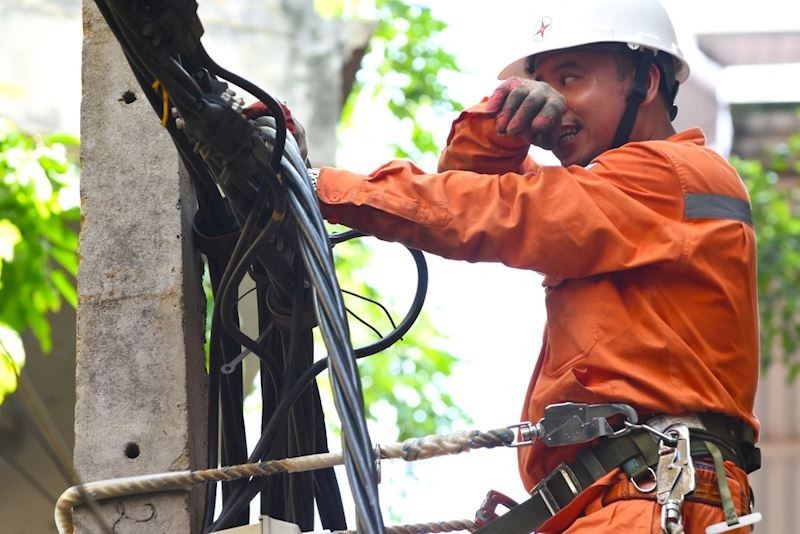
In reminiscing and reflecting on the incident that occurred on May 22, 2013, we can observe the events and consequences that led to difficulties and damages in the Southern power system. At the same time, we can uncover valuable lessons and contemplate deeply.
In the El Niño year, with decreasing hydropower water levels and an increasing proportion of grid-connected renewable energy, it created a memorable year for all developed countries. In that context, on May 22, 2013, a grid failure incident occurred, and on May 30, 2023, by analyzing power charts during power outages at various locations, we can analyze from a management perspective to mitigate risks.
Looking back at the incident on May 22, 2013:
Information about the incident in the Southern power system on the afternoon of May 22, 2013:
Sequence of events:
Before the incident:
Peak power capacity was around 21,000 MW.
Power flow from the 500kV overhead transmission lines (OHTL) transferred from the North to the South.
Grid failure incident:
Grid collapse occurred in the power system of the Southern region of the National Power System at 14:19 on May 22, 2013.
Initial event:
A tree planting crane in the Binh Duong New City area touched the 500kV power line around towers 1072-1073 near the 500kV Tan Dinh substation.
Initial incident:
Overvoltage protection triggered the disconnection of the 500kV Tan Dinh substation and related 500kV/220kV OHTLs.
Protection design philosophy:
Isolate and selectively eliminate fault elements.
Design assumption of a contingency that has minimal impact (acceptable risk) on the system (n-1).
Escalation of the incident:
Loss of interconnection in the 500kV North-South power system, causing a shutdown of all power generation units in the Southern power system (including 15 plants with a total of 43 generating units and 7,300 MW capacity).
Consequences: The Southern power system experienced a complete blackout (approximately 9,400 MW).
Recovery measures: Restoration of the Southern power system load as follows:
-
15:54 on May 22, 2013: EVN restored the operation of the 500kV North-South transmission line and gradually restored the Southern power system.
-
By 18:00 on May 22, 2013, 55% of the Southern load was restored.
-
By 19:30 on May 22, 2013, power supply was restored to the entire Ho Chi Minh City, achieving about 70% of the Southern load.
-
22:40 on May 22, 2013: Full restoration of the Southern power system load.
By 16:00 on May 23, 2013, the total power capacity of the Southern region had not been fully restored, amounting to 1,100 MW, including GT1 Phu My 1 Power Plant and the entire Phu My 3 Power Plant. Currently, EVN and related units are making efforts to restore the mentioned generating units by the evening of May 23, 2013. (EVN press release on the incident on May 22, 2013)
Reading the information on May 30, 2023:
Maximum power capacity in the day: 41,936.9 MW (at 14:30)
-
Hydropower: 179.2 million kWh
-
Thermal power (coal): 461 million kWh
-
Gas turbine (GAS + DO Oil): 101.9 million kWh
-
Thermal power (oil): 11.6 million kWh
-
Solar power: 77.1 million kWh
-
Wind power: 15.3 million kWh
-
Imported power: 14.2 million kWh
-
Other types: 1.9 million kWh
Power flow from the South to the North:
· OHTL 500kV Doc 582 Soi - 576 Da Nang: P = 1114 MW I = 1264 A
· OHTL 500kV 578 Pleiku - 571 Doc Soi: P = 925 MW; I = 1219 A
(report data at 12:00 on May 30, 2023)
(Latest EVN report)
Let's reflect on this: After ten years, the maximum capacity has nearly doubled, and renewable energy has made a significant contribution, even reaching the thousands.
· Cutting power during a hot El Niño day was a situational choice to avoid greater risks.
· The electricity demand during peak hours at noon (12:00): P = 10,362 MW, undoubtedly a necessary trend to meet the "Green" electricity demand in terms of GHG.
· Understand this phenomenon better: Power flow is a result of an investment philosophy that aims to optimize the benefits of investment. It is an important moment to approach investment issues from a risk analysis perspective, considering not only the power transmission capability but also the system's stability.
· Consider constructing a comprehensive, synchronized investment map for energy sources, taking into account the stability of the system. Additionally, it is important to provide flexible commitments in terms of time and pricing to attract investment for each project. This way, we will have a more accurate mechanism to ensure the fair consideration of the benefits of all parties involved.
On the journey accompanying the development of the power system, we have looked back and reflected on the grid failure and power chart readings. Through this, we realize the importance of management and risk prevention. To achieve stability, we need to build a synchronized investment map that considers system stability, commitments in terms of time and pricing. By enhancing renewable energy and exploiting the potential of rotational power, we can develop an efficient power system that ensures the benefits of all stakeholders. Let's work together towards a sustainable power system that contributes to the sustainable development of the country.